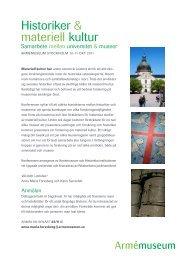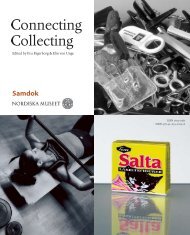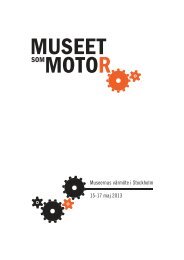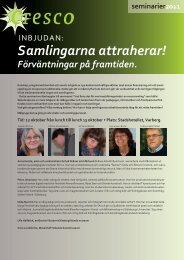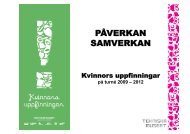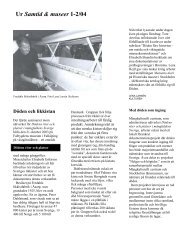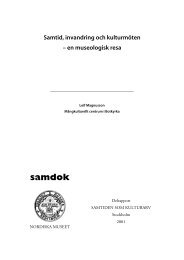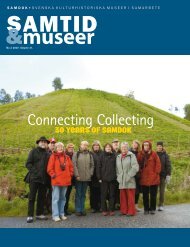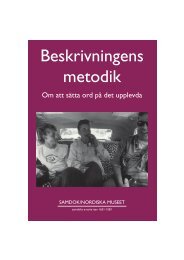Surfing Conversations. The development of a methodological approach to the Internet as practice#Screen shot reproduced with kind permission from Torvet.dk. During a Surfing Conversation, the ethnologist would sometimestake ”screen shots.” The screen shot above shows the completed order at a Danish virtual grocery store. The user needed potatoes,chicken and root vegetables to make an evening dinner. She did not buy ingredients such as spices because she already had them inthe kitchen. The user also bought bananas because they were on sale, not because she was going to use them for the dish.on a specific place on the Internet (a virtual space), aswell as in a corporeal space (or potential non-place).The practice is constituted in both these spaces, andas such the gap between virtual and corporeal isinadequate. From addressing this as a methodologicalquestion, CKA developed the method of the SurfingConversation.Surfing Conversation 7The Surfing Conversation was developed as a methodthat went beyond the dichotomous understanding ofvirtual and corporeal spaces and produced empiricalknowledge concerning practices that occurredsimultaneously on and off the Internet. This wasespecially important because one of the main goalsof the project was to create a business model for theinteractive grocery shopping of the future.7The Surfing Conversation was developed with inspiration fromanthropologists Tim Ingold and Jo Lee’s concept of “walk andtalk” (2006) and also ethnologist Marie Sandberg’s critique of thephenomenological features of Ingold and Lee’s concept, which furtherdeveloped into “Walking Conversations” (2009).During a Surfing Conversation, the user and theethnologist were physically sitting next to each otherin front of a computer with Internet access. Theethnologist started with a presentation of what the userwas supposed to do, which was to go grocery shoppingfor a meal of the user’s own choice on a specific Danishvirtual grocery store. The user was instructed to ”thinkaloud” — that is, to explain what he was doing, suchas “Now I’m clicking on the picture of minced meat.”The Surfing Conversation should provide the settingof both a virtual and corporeal space in which theuser presents his reflections while using the interactivegrocery store. If the user forgot to explain what he wasdoing, the ethnologist would ask a question like, “Whatare you doing now?” — not to lead the answers, butto prompt the user to explain aloud. In this way, theSurfing Conversation got the user to solve a particularchallenge and provide information about the practiceof grocery shopping on the Internet. This was donethrough a user-reflexive process, where the user wasasked to solve a problem in a way that would makethe solution compatible with his everyday practice. Bydoing so, the Surfing Conversation gathered empiricalknowledge on Internet practice — both as entity andperformance, and also as a part of the more general13Nätverket 2010: 17: 8–16http://natverket.etnologi.uu.se
Breddam M.D. & Jespersen A.P.#everyday practice-as-performance of grocery shopping.Further elaborating on the quote from Tom andhis daughter Marie (cited above): It shows thatInternet practice is not something contained in anexclusive virtual space. The practice-as-entity may beoscillating between a virtual and corporeal space, butthe performance is constituted of elements found onthe Internet and in the home (where the computer islocated). However, it is also constituted by relationsbetween what both the virtual and conventional groceryshop offers or not — and what the freezer probablycontains. The performance is constituted through aseries of elements: the freezer, daughter, ethnologist,computer, etc. And in the case of grocery shoppingon the Internet, Tom’s practice goes even furtherwhen involving a product (bacon) that was purchasedin a conventional store — then the entire practiceconcerning conventional grocery shopping is broughtinto play in connection to the Internet practice.Although technology makes it possible to conductvirtual grocery shopping almost anywhere, it alsoneeds to be considered whether users actually wantthis opportunity. The computer can be used in relationto a wide range of other material elements. These couldbe, for example: the type and physical placement ofthe computer (bedroom, office, living room, portablelaptop or netbook, mobile phone, etc.), the extent of thecomputer’s interconnectivity with other technologicalelements (printer, digital camera, the computer at work,etc.), whether the computer is considered a desirableobject or something that should be hidden — or thrown— away. If future grocery shopping is going to beconducted in a non-place, it is a technical requirementthat there is access to the Internet in these non-places.However, it also needs to be taken into considerationwhether users actually want to utilize this time with thecomputer. Sometimes being away from the computeris felt to be a preferred freedom — sometimes it isn’t.New technological opportunities are not necessarilygood for everyone, and therefore one cannot expectusers to do everything on the computer. Samantha, aworking mother, is an example of someone who wouldprefer not to use the computer, but is sometimes forcedto anyway: “I should use it [the computer] more…Thegirls’ school gives information here. We should sit downevery day…it’s something that takes five minutes. But Idon’t — and it’s something that only takes a short time” 8 .As a result of this, it is important that throughoutthe Surfing Conversation, the ethnologist carefullyobserves the use of the computer and the Internet. Butit is equally important that he observes what is goingon around the computer, especially elements that mayexert an influence on the computer practice. This couldbe, for example, children’s play, the placement of thecomputer, kind of computer, etc. All sorts of unexpected8These conclusions are taken from an unpublished project conductedby Mads Dupont Breddam.elements can potentially influence, promote or preventInternet practice. It also shows that even if a usercould conduct virtual grocery shopping everywhere atany time, it is not certain that the user actually wantsthis — it is more certain that some users do not wantthis opportunity.Throughout a Surfing Conversation, the user wasreflexive with regard to the innovative process. Theuser was able, as with the ethnologic Design Game,to decide how to solve the challenge that was definedby the ethnologist. Put in general terms of practiceorientedinnovation, both the ethnologic Design Gameand the Surfing Conversation placed the practice-asentityof grocery shopping with the user into a settingthat combined certain elements. The ethnologic DesignGame used a wide range of elements and produced animage of the user’s grocery-shopping practice. TheSurfing Conversation used a challenge and elementssuch as the meal, the physical setting, the specificvirtual grocery store, etc. With both methods, allthe elements could be combined and transformed bythe user as she preferred, which then represented thepractice-as-performance of daily grocery shopping andInternet use. In this way, both methods presented aparticular setting that was tied to a specific task, butone that was not fixed because each user could changeand shape it to make it fit the requirements of herpractice. The ethnologic Design Game investigated thepractices that were to be transformed by a transitionto virtual grocery shopping. The Surfing Conversationinvestigated Internet practice as a performance thatwas constituted of simultaneously on-line and off-lineelements, and the relations between them.Summarizing the Surfing Conversation as a methodincludes elements of both the traditional qualitativeinterview and participant observation. Theseare combined with the more theoretical insightssurrounding virtual and corporeal spaces and places,practice-oriented innovation and the preliminaryanalysis. In this way, the reflexive method of the SurfingConversation transcends what Aull Davies presentedsimply as a context that the ethnologist needed tobe aware of. Perhaps a Surfing Conversation couldhave been conducted without the earlier ethnologicDesign Game. However, the ethnologic Design Gamewas important in the methodological developmentbecause it showed the immense complexities of groceryshopping. Without the knowledge of conventionalgrocery shopping provided by the ethnologic DesignGame, we do not believe that the Surfing Conversationwould have been nearly as effective in understandingthe empirical knowledge that was produced.ConclusionIn this article, we have described the concept ofpractice-oriented innovation and the development oftwo reflexive methods, the ethnologic Design Game14Nätverket 2010: 17: 8–16http://natverket.etnologi.uu.se



